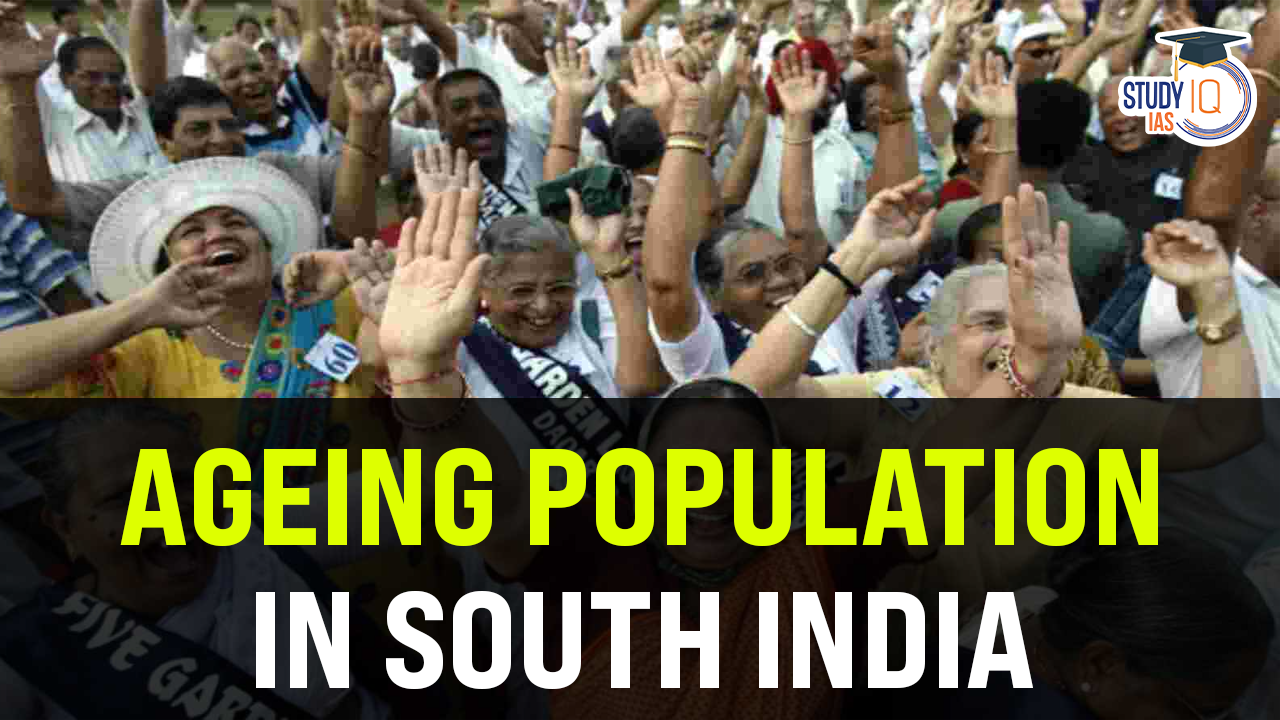Table of Contents
More in News
- He has also announced that his government is working on a law to encourage residents of the state to have more children.
- He stated that South India has lower fertility rates, compared to Northern states, which will lead to a rapid increase in the aged population, which could strain resources in the future.
Demographic Trends in India
- India’s population dynamics are shifting significantly, particularly with an ageing population.
- The 60+ age bracket is projected to increase across all states, although the rise will be more pronounced in Southern states due to their earlier transition to lower fertility rates.
- Example: Uttar Pradesh is expected to reach the Replacement Level of Fertility only in 2025, more than two decades after Andhra Pradesh achieved this milestone in 2004.

Population Projections (2011-2036)
- Total Population Increase: India’s population is projected to grow by 31.1 crore from 2011 to 2036.
- State Contributions:
- Five states (Bihar, Uttar Pradesh, Maharashtra, West Bengal, and Madhya Pradesh) will account for nearly 17 crore of this increase.
- The Southern states (Andhra Pradesh, Karnataka, Kerala, Telangana, and Tamil Nadu) are expected to contribute only 2.9 crore, or about 9% of the total increase.
- Ageing Population Statistics: The number of older individuals (60+) is expected to more than double from 10 crore in 2011 to 23 crore in 2036, increasing their share from 4% to 14.9%.
- In Kerala, the proportion of people aged 60+ will increase from 13% in 2011 to 23% by 2036, indicating an almost one-in-four ratio.
- In contrast, Uttar Pradesh’s population will remain relatively younger, with the proportion of 60+ individuals rising from 7% in 2011 to 12% in 2036.
Two Key Concerns
- Ageing Population: An ageing population means that a larger share of the population will be dependent (over 60 years old) and not part of the workforce.
- This can put a strain on resources, as governments may need to allocate more spending on healthcare and pensions.
- Declining Population and Electoral Representation: A declining population in Southern states has raised concerns about representation in Parliament.
- Electoral delimitation could reduce the number of Lok Sabha seats allocated to Southern states, which have already undergone demographic transitions, compared to Northern states with higher population growth.
Concerns Over Pro-Natalist Policies
- Studies show that pro-natalist policies (encouraging people to have more children) have generally failed.
- Scandinavian countries, with comprehensive family and gender-equality policies, are the only places where pro-natalist measures have had some effect in stabilising fertility rates.
- However, financial incentives alone are insufficient to encourage more births.
Solution
- Internal Migration as a Solution: Internal migration can balance the demographic transition between North and South India.
- Migration already brings working-age individuals to Southern states, allowing these regions to benefit from their labour without having to invest in their early education and upbringing.
- Example from the US: This strategy mirrors the United States, where immigrants contribute to the workforce, fertility rates, and overall economic growth.
- Productivity Over Population Growth: Rather than trying to increase fertility rates, the focus should be on enhancing the economic productivity of the current labour force.
- Ensuring that India capitalises on its demographic dividend (a large working-age population) is crucial for long-term economic growth.
Conclusion
While Southern states face ageing populations, policies aimed at increasing fertility may not be effective. Instead, migration and boosting workforce productivity are seen as more viable solutions to address demographic challenges.


 Utkal Divas 2025: Odisha Foundation Day ...
Utkal Divas 2025: Odisha Foundation Day ...
 List of Military Exercises of India 2024...
List of Military Exercises of India 2024...
 GPS Spoofing and Its Impact in India: A ...
GPS Spoofing and Its Impact in India: A ...





















